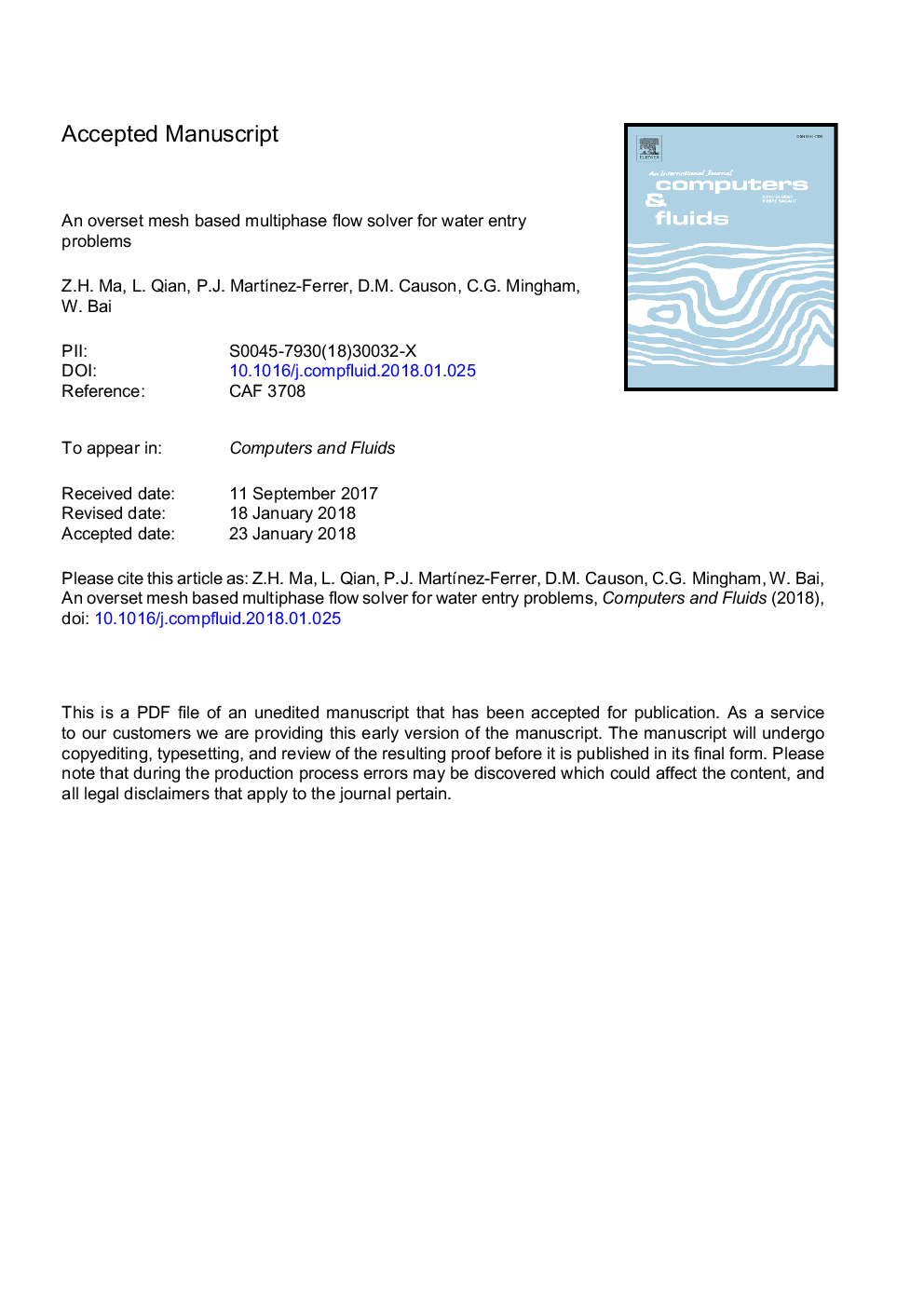| Article ID | Journal | Published Year | Pages | File Type |
|---|---|---|---|---|
| 7155909 | Computers & Fluids | 2018 | 31 Pages |
Abstract
This paper extends a recently proposed multi-region based numerical wave tank (MartÃnez-Ferrer et al. [1]) to solve water entry problems in naval engineering. The original static linking strategy is developed to enable the dynamic coupling of several moving regions. This permits the method to deal with large-amplitude motions for structures slamming into water waves. A background grid and one or more component meshes are firstly generated to overlay the whole computational domain and the sub-domains surrounding the structures, respectively. During computation, the background mesh is fixed while the small grids move freely or as prescribed without deformation and regeneration. This effectively circumvents the large and often excessive error-prone dynamic deformation of a single-block mesh as well as the complex and time-consuming mesh regeneration. Test cases of dam breaking with and without obstacles are first conducted to verify the developed code by comparing the numerical solution against experimental data. Then the new code is used to solve prescribed and free-fall water entry problems. The obtained results agree well with experimental measurements and other computational results reported in the literature.
Keywords
Related Topics
Physical Sciences and Engineering
Engineering
Computational Mechanics
Authors
Z.H. Ma, L. Qian, P.J. MartÃnez-Ferrer, D.M. Causon, C.G. Mingham, W. Bai,
